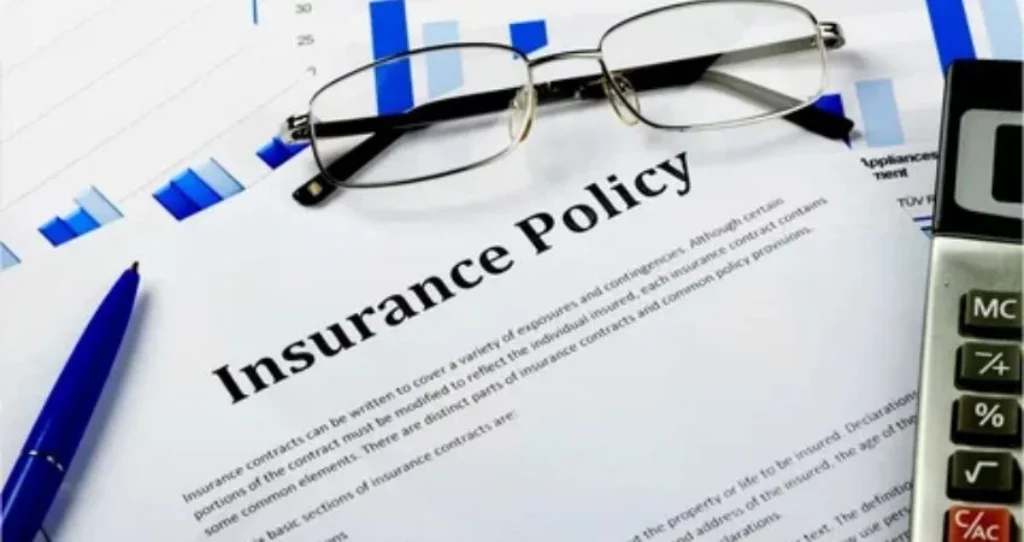A policyholder and an insurance firm enter into a legal agreement known as indemnification whereby the policyholder pays recurring premiums in exchange for the insurer’s promise to offer financial protection against a variety of potential losses or dangers.
This security covers both less tangible worries like property damage or liability and life-altering occurrences like illness or death.
With premiums that reflect the level of risk that has been determined, It serves as an essential risk management tool.
Actuarial data is used by insurers to strike a careful balance between affordability and their capacity to meet their responsibilities.
In the end, It is essential for protecting people and businesses from unforeseen financial setbacks and providing peace of mind in a volatile world. The following are some essential insurance facts:
Contents
Insurance Types
Different policies are available in a variety of forms to cover a range of risks. Typical types include:
(i)Life indemnification
Pays payments to beneficiaries following the death of the insured.
(ii)Health indemnification
Pays for all medical costs, including prescription drugs, hospital stays, and doctor visits.
(iii)Auto indemnification
Offers protection against theft or damage to automobiles as well as liability for accidents.
(iv)Indemnification for homeowners or renters
Guards against loss or damage to property as a result of calamities like fire, theft, or natural disasters.
(v)Business indemnification
This protects companies from a variety of hazards, such as interruptions in operations, liabilities, and property damage.
(vi)Travel Insurance
Travel protection is provided by travel indemnification, which also provides coverage for lost luggage, medical crises, and trip cancellations.
It is against legal claims or lawsuits and is known as liability indemnification.
Premiums

(vii)Liabilities indemnification
Premiums are regular payments made by policyholders to the indemnification provider, usually on a monthly, quarterly, or annual basis.
The type of insurance, the scope of the coverage, the deductible, and the risk profile of the policyholder are a few examples of the variables that affect premium costs.
Coverage
Each indemnification policy clearly states what is and is not covered. The policy contract specifies the specifics of the coverage.
Understanding their coverage is crucial for policyholders to know what risks are covered and what criteria they must satisfy to file a claim.
Deductibles
Deductibles are the sums that must be paid out-of-pocket by the policyholder before the indemnification provider begins to pay the remaining expenses. Deductibles are a common feature of indemnity contracts.
Higher deductibles frequently result in reduced premiums, but more expensive upfront expenses in the event of a claim.
Claims
Policyholders may submit a claim to their indemnification provider following the occurrence of a covered incident.
The indemnification will look into the claim and, if legitimate, payout according to the terms of the agreement.
Depending on the type of insurance, there are many steps involved in filing and processing claims.
Policy Limits
The scope of coverage given by indemnity plans is frequently constrained. A motor insurance policy, for instance, might contain limited compensation for damages. For proper coverage, policyholders should be aware of these limits.
Exclusions
Exclusions, or occurrences or situations that the policy does not cover, are also listed in indemnification policies. For a complete understanding of the coverage, it is imperative to be aware of these exclusions.
Underwriting and Risks
Indemnification firms consider risk while setting premiums. To determine the likelihood of various events occurring and the related costs, they employ actuarial and statistical data. Underwriting is the name given to this process.

Beneficiaries
In a life insurance policy, a beneficiary is the person or organization chosen to receive the proceeds in the event the policyholder passes away.
The majority of contracts are renewable, which means that they may be extended for another period as long as the policyholder continues to make premium payments.
indemnification is essential for controlling and reducing financial risks because it gives people and organizations financial security in the case of unforeseen circumstances.
For many individuals and businesses, it is an important component of financial planning.
Filing an insurance claim can sometimes seem complex and confusing. However, if you understand the basic indemnity claims process, it will be much easier to navigate.
This comprehensive guide will cover everything you need to know about filing claims and what to expect along the way.
We’ll break down the overall process step-by-step so it’s very easy to follow. Let’s get started with an overview of the insurance claims process.
The Ultimate Guide to Insurance Claims Process
Understanding the Basic Claims Process
The claims process typically involves several key steps that most insurance providers follow. Furthermore, While each indemnity company may have some slight variations, the overall claims process remains very similar across different insurance types like auto, home, and health insurance. Here are the main stages you can expect:

- Report the Claim – First, you’ll need to notify your insurance company about an insured loss or accident as soon as possible. This is often called reporting a claim.
- File Your Claim – Your indemnity provider will then guide you through formally filing your claim, which involves gathering details and documentation about what happened.
- Investigate the Claim – The indemnity company will review your claim details and begin investigating to validate the loss and determine coverage and liability, if applicable.
- Determine Coverage – Once the investigation is complete, the insurance provider will assess whether or not the loss is covered under your specific policy terms and conditions.
- Resolve the Claim – If approved, the indemnity company will then work to resolve the claim through reimbursement (paying owed benefits) or repairs/replacement of damaged property/vehicles.
This covers the basic process in a nutshell. However, each step involves important details that you need to know to successfully navigate your claim.
Reporting an Insurance Claim
The first critical step is reporting your claim to the provider as soon as possible. While many insurance companies allow up to a year to file, prompt reporting helps ensure accurate documentation and a smoother claims process overall.
Furthermore, most home and auto policies require reporting within 24-72 hours of the incident, or coverage could be denied or reduced.

When reporting a claim, be prepared to provide basic information like your name, policy number, details of the insured event or loss, and contact details.
You may also need to provide a short written or verbal statement describing what happened.
Promptly reporting provides the quickest path to determining coverage and starting the claims resolution process. Let’s look closer at the claim filing stage next.
Filing Your Insurance Claim
After reporting, your insurance provider will guide you through formally filing your claim. Here are a few key things to expect during the filing process:
- Completing Claim Forms – Paperwork is a big part of any claim. Be prepared to fill out various forms providing details of the incident, damaged property, injuries, etc.
- Gathering Documentation – Your indemnity company will request documentation supporting your claim such as estimates, invoices, photos of damage, police reports, and medical records.
- Submitting Your Claim – Once complete, submit all required forms and documentation to your insurance provider via mail, fax, online portal, or mobile app depending on company preferences.
Thoroughly completing forms and gathering proper documentation are essential for a smooth claim filing. Doing so upfront can help expedite the investigation process. Let’s take a closer look at that next important step.
The Insurance Investigation Process
Once your claim is filed, the indemnity company will begin a thorough investigation process to gather facts and validate details. During this stage, you can expect activities like:

- Reviewing Your Policy – Adjusters analyze your active policy coverage, limits, exclusions, and other specifics.
- Inspecting Damages – Property damage may require an on-site inspection to verify the scope and documentation/estimates provided align.
- Interviewing Parties – Statements may be collected from you, any third parties involved, witnesses, medical providers, and more through phone calls or written documentation.
- Researching Details – Additional research is often done into police reports, traffic cameras, weather data, medical records, vehicle history, and more to fully understand what occurred.
Full cooperation is needed during investigations to resolve any discrepancies or questions as quickly as possible. Most indemnity investigations aim to be completed within 30 days, though complex claims may take longer.
Determining Insurance Coverage
Following a thorough investigation, adjusters will assess all findings and evidence to determine if your loss meets the policy’s criteria for coverage. At this point, a coverage decision will be made in one of three ways:
- Covered – If details validate the insured event is covered under the policy terms with no policy violations, the claim is approved for coverage.
- Not Covered – If evidence suggests the incident or loss falls outside the scope of coverage or involves policy exclusions, the claim may be denied.
- Partial Coverage – Some aspects or damages from the claim may be covered while others are not.
You will be notified of the final coverage decision in writing. Coverage is key, as it dictates whether benefits will be paid to resolve the claim. Let’s look at that next vital resolution stage.
Resolving Your Insurance Claim
Once coverage is confirmed, your insurance provider will work to bring resolution to the claim through reimbursement, repair, or replacement of affected property and assets. Here are a few common resolution options:

- Claim Payment – A check is issued reimbursing you for claimed losses, damages, or out-of-pocket costs like medical bills or lost wages based on policy limits.
- Authorizing Repairs – Damage repairs to vehicles or property are approved through your preferred repair shop or contractor using OEM parts when possible.
- Replacing Items – Totaled vehicles, destroyed property contents, or personal items are replaced with items of similar age, condition, and value.
Resolution may still require some coordination if disputes arise over pricing, additional living costs, pre-existing conditions, or the causation of further losses.
Indemnity companies aim to resolve the majority of claims within 30-60 days when coverage is confirmed.
Here are a few final tips for smoothly navigating your claim from start to finish:
- Report losses or incidents promptly according to policy deadlines.
- Be thorough when filing claims, but don’t be overwhelmed with too much paperwork.
- Fully cooperate during investigations to resolve any questions upfront.
- Keep accurate records of all documentation, costs, communications, and resolution steps.
- Contact your agent or claims adjuster if you have concerns or need status updates.
- Escalate issues through regulators if reasonable claim resolution is denied unreasonably.
With patience and diligent documentation, most standard claims can be successfully resolved within policy guidelines.
Don’t hesitate to reach out for help if confusion or denial arises. I hope this ultimate guide helps you better understand the overall insurance claims process and your rights as a policyholder.






